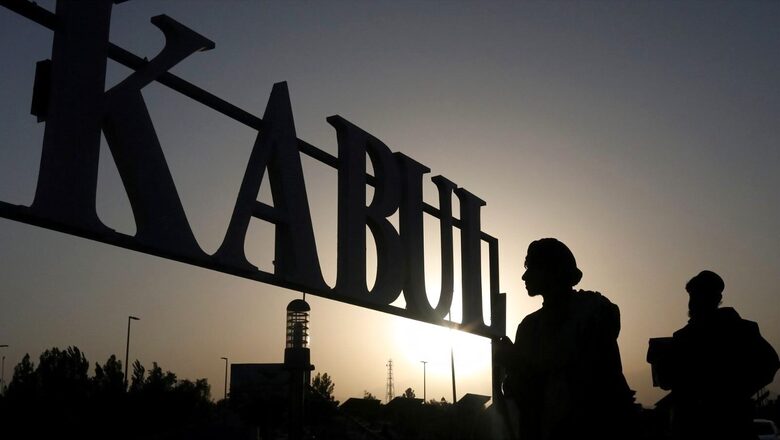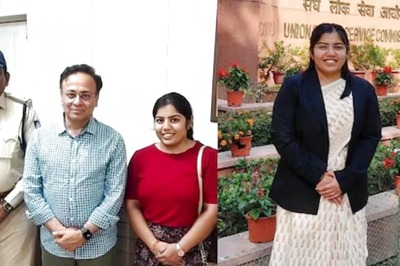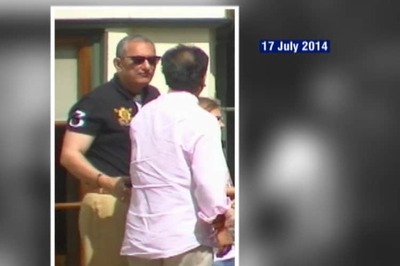
views
In the last few years, India has conducted bilateral dialogues with Central Asia, the most recent one being the 2nd India-Central Asia Dialogue in October 2020. The Shanghai Cooperation Organisation (SCO) and Conference on Interaction and Confidence-Building Measures in Asia (CICA) meetings provide regular channels for communication with the region and even Prime Minister Narendra Modi has visited the region to meet Central Asian leaders and vice-versa. In spite of regular engagements, stable relations as well as historical and cultural linkages with Central Asia, India has arguably remained a nominal actor in the region. But, owing to the ongoing developments in Afghanistan and its vested interests there, bolstering ties with the Central Asian states would be highly beneficial for India.
Central Asia’s expected centrality in most engagements with the Taliban due to geographic and strategic factors could be especially relevant. The latest United Nations Security Council (UNSC) report warns of a ‘fragile’ security situation in the country due to an expanding al-Qaeda and Daesh presence in Afghanistan. Estimates suggest that former Islamic State fighters from Central Asia are back to their home countries, following the IS’s loss of territories in West Asia, causing supplementary distress.
Central Asia’s vulnerability is perceived to be arising from Turkmenistan, Uzbekistan, and Tajikistan sharing borders with Afghanistan. Currently, out of the five Central Asian Republics (CARs), Uzbekistan, Turkmenistan, and Kyrgyzstan have displayed some willingness to engage with the Taliban, but Kazakhstan and Tajikistan have opposed the group unless it forms an inclusive and representative government. But, engagement or not, the whole region will be wary of the situation in Afghanistan.
Tajikistan has appealed to the Russian-led military alliance Collective Security Treaty Organisation (CSTO), which includes the CARs (excluding Turkmenistan and Uzbekistan) along with Armenia and Belarus, to come together and combat the security challenges, if any, arising from the situation in Afghanistan. Russia has vowed to protect its allies in Central Asia and the CSTO has disclosed plans to conduct large-scale military exercises in Kyrgyzstan and Tajikistan.
ALSO READ | The Strategic Disconnect between India and US Has Been Revealed by Afghanistan
Meanwhile, Russia and China, the two big powers in the region, feel vulnerable to the spill over of radicalism and terrorism, drug trafficking via Central Asia, if Afghanistan is unstable. So, the CARs’ strategic importance because of their physical proximity to Afghanistan is likely to bring them into the focus of multilateral forums.
On the other hand, India’s ability to influence international discussions on Afghanistan despite legitimate stakes remains suspect due to its lack of engagement with the Taliban. India has invested US $3 billion in development projects, offered scholarships to Afghan students, helped construct the Parliament building at a cost of US $90 million and has around 400 plus projects in the country spread across 34 provinces. Bilateral trade with Afghanistan had increased over the years to reach US $1.5 billion in 2019–2020. Moreover, India is deeply concerned about the security implications for Jammu & Kashmir because of Taliban’s close nexus with Pakistan.
While India is a part of multilateral forums such as the SCO and the Moscow Format talks dealing with the Afghan situation, it remains to be seen how significant a player India, which has been historically averse to the Taliban, will be considered within these. But, the SCO could be an effective platform to improve ties with Central Asia and coordinate on Afghanistan, given that all CARs but Turkmenistan are members, along with important regional players. This would be particularly helpful considering India’s perception as a mere “bystander” in Afghanistan, as stated by Vivek Katju, a former Indian Ambassador to Afghanistan, a notion underlined by Russia’s Special Envoy to Afghanistan, Zamir Kabulov when asked about India’s exclusion from the Troika and the Troika Plus. Therefore, India could prevent getting sidelined if it is able to build on its historically stable relations with the CARs to craft a robust relationship by enhancing ties with the region.
Next Course of Action
A plausible way for India to deepen its engagement with Central Asia would be through more trade. China has established its influence in Central Asia by becoming the region’s most important trading partner, roughly amounting to US $100 billion. Contrastingly, India’s trade with Central Asia is at a meagre US $2 billion, despite the CARs being rich in energy and mineral resources such as oil, natural gas, uranium, gold, silver, etc. and India being highly import-dependent in terms of energy requirements. They trade in energy, pharmaceuticals, chemicals, agricultural products, defence equipment, etc. but the numbers are far from satisfactory.
India has recurrently displayed the willingness to devise comprehensive policies on Central Asia, at least in the last decade or so, but it seems to have generated limited positive outcomes. The 2012 “Connect Central Asia” Policy endeavoured to expand India’s political, security, economic, and cultural connections with the region. Since then, Prime Minister Narendra Modi has reinforced the policy in 2015 by visiting Central Asia, and also met Central Asian leaders multiple times in the following years. Yet, India still remains a marginal player in the region with minimal influence compared to Russia, China, Turkey, Iran, etc.
ALSO READ | Hello Kabul, Delhi Calling: Let’s Keep Line of Communication Open
The most cited reason for the underwhelming economic ties relates to the lack of connectivity. Due to the landlocked nature of CARs, there is no direct sea route between India and the region. The overland route through Pakistan and Afghanistan remains unviable due to strained ties with the former and instability in the latter. The Chabahar Port in Iran is expected to bridge this connectivity gap substantially, but sanctions on Iran have delayed operations that have also supposedly tempted the economically frustrated Iranians to explore Chinese investments in the port, causing apprehensions in India. Other projects that could potentially buttress trade and connectivity such as the Turkmenistan-Afghanistan-Pakistan-India (TAPI) Pipeline and the International North-South Transport Corridor (INSTC) have not come to fruition due to sanctions and geopolitical complications.
Recognising the accentuated strategic importance of Central Asia, India should ideally take an aggressive approach towards trade with the region by not only trying to ensure the execution of pending connectivity projects, but also identifying other areas such as digital infrastructure and education that provide scope to improve regional presence. Since security is a common concern for both India and the CARs, defence cooperation should be another domain to explore beyond what exists currently, much like the currently ongoing joint-military exercise “KAZIND” between India and Kazakhstan.
India could also look to utilise its longstanding friendship with Russia, one of the most influential players in Central Asia, to make more headway in the region. A positive step to this end has been the recent conversation between Indian Prime Minister Narendra Modi and Russian President Vladimir Putin, where the two leaders extensively spoke about expanding cooperation in Central Asia, amongst other issues.
Until now, Central Asia has always been perceived by India as a strategically important region because of its geography and natural resources. But India’s limited influence with the Taliban, combined with Central Asia’s importance in navigating the unfolding scenario in Afghanistan elevates the significance of improved ties between the two. To increase its ability to put concerns about Afghanistan on the table with help from the CARs, it would be beneficial for India to take a pro-active approach towards enhancing trade and connectivity with Central Asia while also looking to identify and develop new areas of cooperation.
This article was first published on ORF.
Read all minute-by-minute news updates for Uttar Pradesh election results 2022, Punjab election results 2022, Uttarakhand election results 2022, Manipur election results 2022, and Goa election results 2022.
Click here for seat-wise LIVE result updates.




















Comments
0 comment